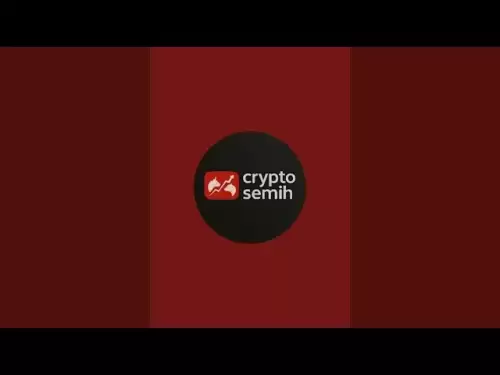 |
|
 |
|
 |
|
 |
|
 |
|
 |
|
 |
|
 |
|
 |
|
 |
|
 |
|
 |
|
 |
|
 |
|
 |
|
암호화폐 뉴스 기사
Vitalik Buterin Has a Bold Idea to Increase Ethereum's Speed and Simplify Its Architecture
2025/05/06 01:28

In a move that is sure to spark discussion in the crypto industry, Ethereum co-founder Vitalik Buterin has put forward a bold idea to simultaneously increase Ethereum’s speed and simplify its architecture.
The goal is a simple and safe system like Bitcoin’s with 100x performance increase and a 7/8 majority of validators being able to process new blocks even if there are failures.
An Extreme Rethink of Ethereum’s Complexity
DeFi, NFTs, and other magic spells have made Ethereum the most flexible blockchain for smart contracts. But that adaptability comes at the cost of complexity.
Buterin feels that after the merger, Ethereum’s architecture has become clumsy and brittle. In a recent blog post, he urged a fundamental reexamination of Ethereum’s layer-1.
While aiming for huge throughput gains, his new approach focuses on reducing the validator burden, streamlining the protocol rules, and adding more effective data availability solutions.
The 100x Speed Boost: What Are the Mechanisms?
At the heart of Vitalik’s idea is stateless validation, allowing validators to verify transactions without storing the entire blockchain state. This reduces memory requirements, rendering Ethereum more scalable and accessible to a broader range of actors.
Combining this with roll-ups (layer-2 scaling methods) and data availability sampling (DAS), the strategy could massively expand Ethereum’s speed and throughput—potentially by up to 100x.
The mix would enable Ethereum to handle thousands of transactions per second (TPS), drastically reducing congestion and fees.
Buterin is Inspired by Bitcoin’s Simplicity
Interestingly, Buterin is looking back at Bitcoin for inspiration. He suggests that Ethereum should strive for Bitcoin-like minimalism and stability—fewer moving parts, clearer security assumptions, and simpler protocol to be audited.
This represents a shift in philosophy. Usually, Ethereum values flexibility at the cost of simplicity.
Buterin believes that to reach the next level of scalability and mainstream adoption, there's a need to prioritize simpler, more robust design ideas, something which Bitcoin has always embodied.
Why This Matters to Users and Developers
A simplified Ethereum would mean easier integration, fewer bugs, and more reliable infrastructure for developers.
Users would enjoy faster and cheaper transactions without sacrificing security, and DApp developers wouldn't need to constantly adapt to a changing base layer.
The idea also captures the evolving priorities of Ethereum. As the ecosystem matures, long-term sustainability and decentralization take center stage.
With its leaner, faster, and more approachable nature, Ethereum might become the de facto platform not just for experimentation but also for mainstream financial and social use cases.
Ethereum 2.0: A Revised Vision
This fresh perspective from Vitalik Buterin is not merely a tweak; it's a transformation of Ethereum.
Striking Bitcoin-like elegance and combining it with Ethereum-scale ambition will help the network open a future where scaling does not have to compromise decentralization.
As this idea progresses from concept to code, the crypto industry will be watching closely. Should it succeed, it could redefine the story of Ethereum—shifting it from a sophisticated developer playground to a simple, strong infrastructure layer for the decentralized internet.
부인 성명:info@kdj.com
제공된 정보는 거래 조언이 아닙니다. kdj.com은 이 기사에 제공된 정보를 기반으로 이루어진 투자에 대해 어떠한 책임도 지지 않습니다. 암호화폐는 변동성이 매우 높으므로 철저한 조사 후 신중하게 투자하는 것이 좋습니다!
본 웹사이트에 사용된 내용이 귀하의 저작권을 침해한다고 판단되는 경우, 즉시 당사(info@kdj.com)로 연락주시면 즉시 삭제하도록 하겠습니다.






























































